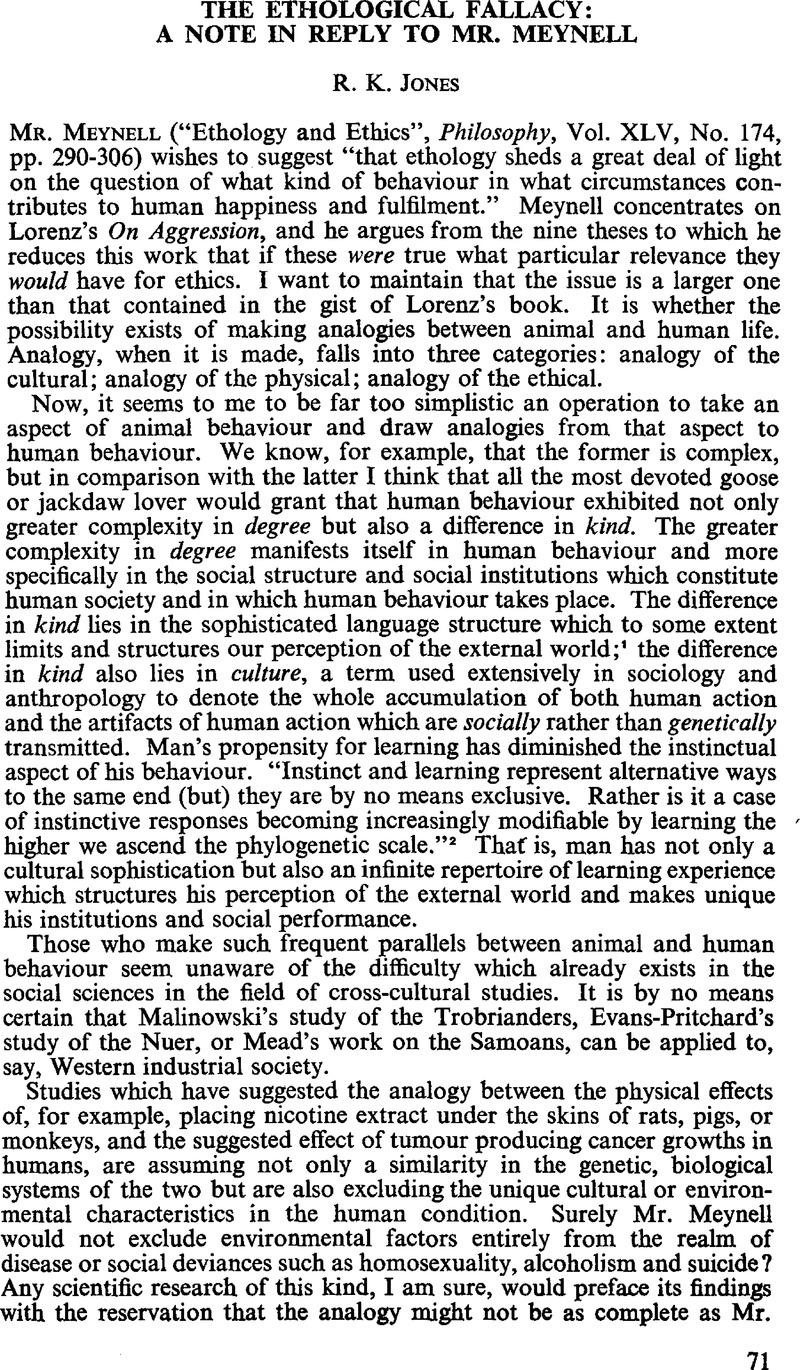Published online by Cambridge University Press: 25 February 2009

1 Wittgenstein, L., 1922, Tractatus Logico-Philosophicus, London: Kegan Paul, sections 36: 5.47IIGoogle Scholar; 5.62. Philosophical Investigations, 1953, Oxford: Blackwell's p. 223.Google Scholar
Selected Writings of Edward Sapir in Language, Culture, and Personality, 1949, edited by Mandelbaum, David G., Berkeley: University of California Press.Google Scholar
Language, Thought and Reality: Selected Writings, 1956. Selected writings of Whorf, Benjamin L., edited and introduced by Carroll, John B., Cambridge, Mass.: Technology Press of M.I.T.Google Scholar
2 “The Beginnings of Perception’, Dixon, N. F., in New Horizons in Psychology, edited by Foss, Brian M., 1966, London: Penguin, p. 57.Google Scholar
3 Harlow, H. F., 1961, “The Development of Affectional Patterns in Infant Monkeys’, in Determinants of Infant Behaviour, edited by Foss, Brian M., Vol. I, London: Methuen.Google Scholar
4 Ardrey, Robert, The Social Contract, 1970, London: CollinsGoogle Scholar. Different ages have applied differing models to the study of animal behaviour. Ardrey seems to be suggesting a sort of unifying evolutionary or biological connectedness which brings together all animal and human societies
Eysenck, as a behavioural scientist, believes that general laws can usefully be applied to individuals. Observation of animal behaviour and laboratory experimentation on non-huminoids yields data which can be claimed to be analagous to human behaviour. Yet in the process of carrying over, from one area to another, broad generalizations, extreme caution needs to be, and usually is, exercised. See Eysenck, H. J., The Biological Basis of Personality, Springfield: C. C. Thomas, 1967.Google Scholar
5 Dimond, Stuart J., The Social Behaviour of Animals, 1970, London: Batsford. Especially pages 180–209.Google Scholar
6 Ibid, p.187.
7 Ibid, p.198.
8 See Farber, I. E., “Personality and Behavioural Science’, in Readings in the Philosophy of the Social Sciences, 1968, New York: Macmillan, especially pp. 160–164, edited by Brodbreck, May.Google Scholar